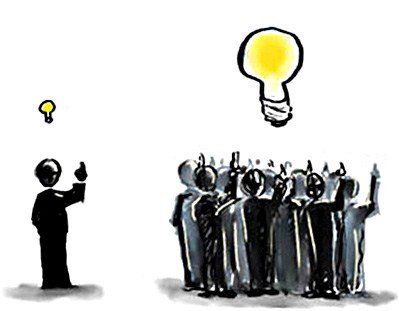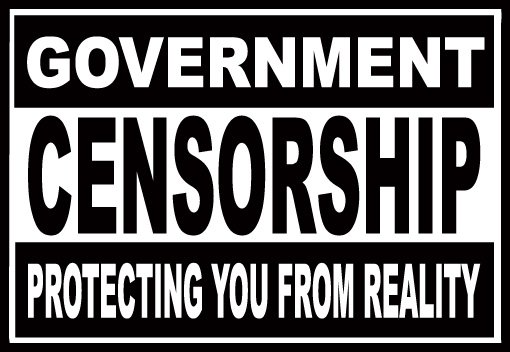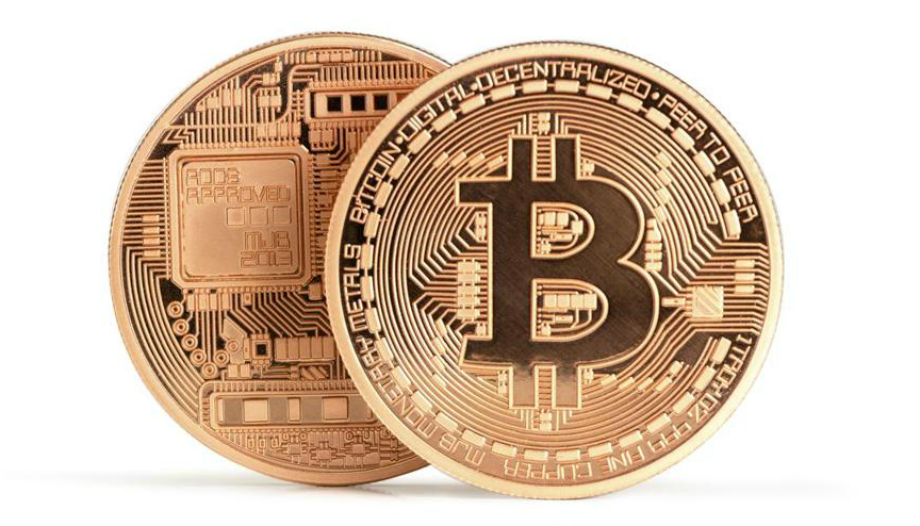
In the absence of consensus there is disagreement, strife, and ultimately civil war. The challenge for humanity is to develop systems that facilitate consensus and minimize opportunity for discord. These systems need to be robust in the face of attacks from those who wish to manipulate the perceived consensus for their own gain.
We all know what we think the consensus opinion is, but in reality there are two different consensus opinions that don’t always line up:
- What everyone really thinks (true consensus)
- What everyone thinks everyone thinks (perceived / effective consensus)
There is a significant difference between “perception of consensus” and “actual consensus”. This difference has never been clearer than the “perceived consensus” that Hillary would win, and the “actual consensus” that Trump won. Similar situations show up in the climate change debate where some people “claim consensus” by simply ignoring or writing off those who disagree and then use their domination of public discussion to create the illusion of consensus.
Illusion of Consensus

Those who are able to generate an illusion of consensus, a fraudulent consensus, gain unimaginable influence over the masses. This influence is derived from people's natural tendency to trust "public opinion" on any issue they don't understand. People are also desire to belong and their fear of being an outcast for holding an unorthodox opinion. The illusion of consensus is created by manipulating public opinion about public opinion. It is next to impossible for any individual to directly measure public opinion, so we all use various signals to estimate opinion:
- What friends and family think
- Frequency of opinion on TV and online
- Polls
- Voting
The sad part is that most people defer to their perception of consensus rather than bring new information and critical thinking to society. This means that “what friends and family think” is usually highly correlated with what they think everyone else thinks. This creates a self-reinforcing feedback loop that is difficult to change once established. Eventually the perceived consensus becomes part of culture, religion, language, identity, and habit. Once it reaches this stage all attempts to change the consensus are reflexively resisted without thinking in an effort to defend our identity and egos. No one likes to admit they were wrong.
Preventing Fraudulent Consensus
A fundamental requirement for reaching true consensus is censorship-free peer to peer information exchange. All attempts to censor communication impact the ability of people to reach a real consensus. If you censor all opinions contrary to the party line then it can give the outward appearance of one (fraudulent) consensus even if the true consensus is exactly the opposite.
The art of propaganda is to convince everyone that everyone else thinks a certain way. If you believe everyone is against you, then you will be afraid to say what you think for fear of rejection. This creates a paradox where everyone thinks there is one consensus (the prevailing propaganda) when in reality what people really think is completely different. Any time people act on a misperceived consensus all of society suffers a loss of efficiency and a waste of effort.
Those who lack the self confidence necessary to form their own opinions are apparently overconfident in their ability to form an opinion on what everyone else thinks.
More often than most people want to admit, people will choose to believe what they think everyone else believes. This stems from a lack of self confidence and the belief that “everyone else cannot be wrong”. It may well be true that “everyone else cannot be wrong”, but that statement fails to account for the fact that you could be wrong about what everyone else thinks! Those who lack the self confidence necessary to form their own opinions are apparently overconfident in their ability to form an opinion on what everyone else thinks.
In the end it is possible to change the real consensus (what everyone really thinks) by carefully crafting propaganda about what other people think. The most obvious example of this is the pre-election polling designed to create the illusion that Hillary Clinton was the favored candidate by the masses.
The Importance of Proving the Real Consensus

"The Emperor's New Clothes" is a short tale by Hans Christian Andersen about two weavers who promise an emperor a new suit of clothes that they say is invisible to those who are unfit for their positions, stupid, or incompetent. When the Emperor parades before his subjects in his new clothes, no one dares to say that they don't see any suit of clothes on him for fear that they will be seen as "unfit for their positions, stupid, or incompetent". Finally, a child cries out, "But he isn't wearing anything at all!"
The emperor has no clothes, but the popular consensus is that he is wearing the finest clothes ever made. Everyone thinks everyone else can see the clothes and therefore pretends that they also see the clothes. No one dares to speak out because they fear that if they do there will be no one to back them up. Who are you going to (pretend to) believe, “everyone else” or your lying eyes?
Some people are smart enough to know the emperor has no clothes, but they believe the emperor will punish them if they say otherwise. In this case they believe everyone else believes the emperor has authority to punish those who would expose his nakedness. Does everyone else really think the emperor should have that power? Does the emperor have any power without the belief of the masses? His power to punish is just as real as the perception of his clothes.
If the people had a way to accurately assess what everyone else really thought, then no one would act based upon misinformation. People would not fear being punished by the emperor because they know the masses would back the truth and mock those who claimed to see fine clothes. Without access to reliable information about other people’s thoughts people will act in unproductive and harmful ways (praising the emperor's fine clothing and bowing to his authority as the emperor slaughters clothing deniers). Sadly, even those who know the emperor has no clothes will murder the deniers to save their own skin from the delusional consensus.
Consensus Depends upon Free Speech
All attacks on free speech limit the ability of people to discover what those around them really think. If the naked emperor outlawed any speech that said or implied that his clothes were not the finest ever made and then enforced that decree by intercepting and filtering all forms of communication then it would significantly hamper people’s ability to know whether they are incompetent, possess x-ray vision, or are just like everyone else.
Censorship vs. Propaganda

There is no shortcut to eliminating propaganda and fake news. The power to censor is the power to manipulate reality as perceived by the masses. Propaganda (fake news) also has the power to manipulate the reality of anyone who fails to consider all opinions. The difference is that propaganda only works on those who trust the source of propaganda. Once that trust is lost the propaganda loses all power. Censorship, on the other hand, denies people the opportunity to think for themselves. Censorship is a centralized authority deciding what is true and false for their own benefit, whereas propaganda is a centralized authority attempting to influence a decentralized mob. Propaganda is far weaker than censorship when it comes to controlling public opinion.
Society operates on a web-of-trust. We all tend to build our own beliefs based upon the collective inputs of those we trust, first hand experience, and varying degrees of logic. Censorship is an attempt to sever the flow of certain information through branches of that web.
The mainstream media propagandists have been losing their power thanks to the free speech enabled by the internet. In response to their loss of power, they are proposing censorship as the solution. It should be clear to all thinking men that censorship is worse than any propaganda because it grants power over propaganda to a single group. While both propaganda and censorship can be used to manipulate the general consensus, only censorship attempts to create an environment where propaganda can go unchallenged. Unchallenged propaganda represents complete control over the general consensus and empowers the ultimate tyranny.
Consensus is Slow to Change
The deepest held beliefs of the masses are established over decades and are very difficult to change. Imagine trying to convince people to switch from English to Chinese, from Imperial to Metric, from left side driving to right, from the Dollar to Gold, or violence to nonviolence. It requires extraordinary events to get people change things on this level.
What we can conclude from this is that real consensus takes years to establish and once established is next to impossible to change (even in the face of logic and reason). All attempts at changing the consensus are met with resistance. Society is trapped in a prisoner's dilemma where people will not change their opinion until/unless they think everyone else has changed their opinion. Few people are willing to “go first”. The end result is that even if 80% of the population wants consensus to change, consensus cannot and will not change until people believe that 80% actually will change. Once that tipping point is reached, there is a tectonic shift in consensus that sends a destructive earthquake through society that brings down everything dependent upon the old consensus.
100 years ago there was world-wide consensus that gold was money. This consensus continued through the 1933 gold confiscation clear through Bretton Woods until 1971 when Nixon closed the gold window. What we learn from this process is that consensus that was originally built around a trustless currency (gold) with limited supply that was free from political control gradually shifted to fiat dollars backed by nothing and entirely under the control of private central banks. Now they are attempting to remove cash as well.
If they attempted to remove the gold backing in 1913 when the Federal Reserve was created, then the entire world would have rejected it. It took a century with continuous propaganda to gradually move people from decentralized free market money (gold and silver), to fully centralized digital fiat tokens.
How Blockchains Facilitate True Consensus
Free markets and free societies depend first and foremost upon consensus on property rights, of which ownership of money is perhaps the most important. Money is half of every transaction; therefore, if consensus over who owns money can be reached we have solved half of the problem of property rights. When consensus over money collapses the result is a disorderly collapse via hyperinflation.
Blockchains generate a public record that can be verified by all. For the first time in human history we have a technology that gives everyone the power to directly verify the signed testimony of everyone else and the order in which it was created. We have the power to draw deterministic conclusions based upon the incorruptible inputs of the masses. We are no longer dependent upon trusting a 3rd party to validate our transactions.
There are two levels of consensus that a blockchain must reach: Internal Consensus and External Consensus.
Internal Consensus
A blockchain must reach an internal consensus as to which blocks of transactions are valid and how to govern itself. There are as many different algorithms for reaching internal consensus as there are forms of government. Internal consensus involves those who have already adopted a particular blockchain.
For small groups it is possible to directly poll everyone and thereby prove consensus. As groups get larger it becomes increasingly difficult to get everyone to agree and even more difficult to measure. Once a certain critical mass is reached changing the consensus from the status quo becomes almost impossible.
External Consensus
This level of consensus involves deciding which blockchains to adopt. Reaching this consensus must be done the old fashioned way. Each and every day those in favor of crypto-currency are attempting to convince the masses to “switch” to one flavor of crypto or another. Meanwhile the status quo consensus on King Dollar and government authority are resisting change.
The Best Internal Consensus Algorithm
A large part of achieving a strong external consensus is by having a strong internal consensus algorithm. People want to know that if they go through the effort of abandoning King Dollar that they will not end up with Emperor Bitcoin. They want to know that the new system is better than the old system. They need to trust that the internal consensus algorithm has superior checks and balances than the existing government and monetary system.
In order to trust a consensus algorithm people need to believe that it is fair in their own subjective opinion and they need to believe that it will remain fair in the long run. What should be clear to everyone is that what the masses subjectively believe to be best may or may not be what is objectively best. If enough people believe a certain way, it is very difficult to get them to change their opinion.
Proof of Work - (Bitcoin)

Bitcoin has an internal consensus algorithm that uses a mathematically proof to determine the internal consensus over which transactions are valid and when new transactions can be included. There is very enticing marketing about the benefits of eliminating politics from the internal consensus process. This marketing appeals to everyone who is tired of corruption, cronyism, and the general “stupidity” of voters. Everyone who fears mob rule and the rule of dictators can see some appeal in being ruled by math.
The perceived external consensus is that Bitcoin is decentralized, censorship resistant, and fixed supply free from political manipulation. It is clear that people want a system that cannot be manipulated by those in power for personal profit. Whether or not Bitcoin has these properties in practice is subject to debate.
Proof of Work is a consensus model that grants censorship rights to the highest bidder. Whoever is willing to do the most mathematical work for the least direct reward gets to decide which transactions to include. The theory is that no single individual would have the resources to buy all of the censorship rights. The theory is that market forces will always favor including transactions that pay the highest fee and that competition will keep fees low.
The theories are all short-sighted. Bitcoin’s value is tied to the number of people who believe in it, just like every other currency (Gold, Silver, Dollar, etc). Once a particular medium of exchange gains enough network effect (external consensus) the economic calculation changes. External consensus is like vendor lockin, very difficult to change. The value of having monopoly control over a monetary system with external consensus is far greater than the internal rewards.
Imagine for a moment that the Federal Reserve moved their accounting to a blockchain based upon proof of work. There would be no need for block rewards because the free market would compete based solely on the right to censor. The right to censor is the same as the right to charge a fee for service. Whoever can obtain 51% of the hashpower gains a natural monopoly on financial transactions. Once a monopoly is achieved they can charge whatever the market will bear without competition to keep prices as low as possible.
Someone with a monopoly on money transfers gains the power to freeze accounts and demand compliance with any rules they fancy. The only recourse individuals have is to stop using the currency, but once a strong external currency consensus has been established opting out is extremely expensive or impossible. People need to participate in the market to survive; therefore, being cut off from currency transfers means death or extremely high-overhead barter transactions.
The free market cannot not compete directly against a government subsidized industry because free market actors must make a profit. This means that control over the US dollar would fall to whichever country was willing to tax its citizens the most to win the proof of work battle. In some sense, control may fall to which ever country is able to manufacture the best ASIC hardware which they then keep a state secret.
The people in these various countries realize they would be better off leaving proof of work and simply accepting a centralized manager of the public ledger for Federal Reserve Notes. From an external perspective there is no difference between a centralized entity that spends $1 trillion dollars on proof of work and a centralized entity that spends $0 on proof of work. The day-to-day experience of the average man on the street is the same under either blockchain consensus model. The only difference is that under one model the people are taxed to burn electricity and under the other model there is no tax.
Proof of Stake (Peercoin)

Another internal consensus algorithm is known as Proof of Stake. Peercoin was the original Proof of Stake coin and its model replaces computational power with voting rights based upon tokens. Each Peercoin holder is given an opportunity to produce a block containing transactions proportional to the number of Peercoins they hold. At first glance this model is more censorship resistant than Bitcoin because everyone can participate without depending upon a competition of economic might in ASIC and electricity production. While you may be able to tax people to fund your control over Proof of Work, it appears to be impossible to take people’s control over Proof of Stake without actually taking all of their money.
In practice the algorithm used by Peercoin breaks down due to a limited confirmation window. The confirmation window is the period of time during which blocks and transactions may be reversed due to new information. Technically Bitcoin has an infinite confirmation window, but practically it is about 1 day (120 blocks). If we assume Peercoin has a 1 day confirmation window then 100% of all power rests with those who can produce 51% of blocks in a 24 hour period.
Due to natural wealth disparities we know that most people would only have an opportunity to produce a block about once per month, while the richest people would get to produce every hour or even more frequently. Unless the masses are in coordinated agreement (unlikely), then control over including transactions in the blockchain will be shared among a few top token holders.
If the US Dollar were to move to a peercoin style proof of stake system, then the largest governments and maybe a few top corporations with large cash holdings would collectively be in control. This system would be significantly harder to censor than Bitcoin because it isn’t winner take all based upon external resources. Instead, it is based entirely on internal resources which, when properly distributed, are economically infeasible to monopolize.
The cost to monopolize an established Proof of Stake system grows exponentially due to the laws of supply and demand and comes at the expense of enriching your competitors and all normal users. The cost to monopolize a Proof of Work system is linear and does not enrich your competitors nor any normal users.
It is not unrealistic to expect collusion among major stakeholders, potentially held at gunpoint. These people have large personal wealth and a financial interest in keeping it. This system most closely resembles a oligarchy in which the masses have no input at all.
Delegated Proof of Stake (Bitshares and Steem)
DPOS is a model of internal consensus uses approval voting to elect the people who will produce blocks. In order to censor people under this model you must convince 51% of the elected witnesses to censor and you must subvert the election process. Just like Peercoin, an oligarchy of rich stakeholders will have the majority of influence over which witnesses are selected. The major difference is that collectively the “masses” of small accounts can and will add up to more influence than any individual oligarch.
There is one major difference between DPOS and all other internal consensus systems. It gives the masses the ability to clearly measure the opinion of their fellow man. While this opinion may or may not carry meaningful weight on the internal consensus, it will absolutely carry weight on the external consensus. With clear and tamper-proof voting the masses can collectively overthrow oligarchs which would subvert the election process or otherwise censor transactions in a manner that is out of alignment with the external consensus.
Importance of Combining Internal and External Consensus
Ultimately we are all subject to external consensus because it is what exists outside of any system. No system, not even the worst tyranny, can resist the power of external consensus for long. A large part of external consensus is established by the culture surrounding a currency. When people adopt that currency they are implicitly or explicitly agreeing with a set of principles shared by all other users of the currency.
Any attempt to change the internal consensus in a way that is out of alignment with the well established principles of the external consensus will be met by resistance and quickly overthrown by a hardfork. The simpler the principles the easier it is to establish and enforce an external consensus.
This is why it is critical to establish the principle that all stakeholders have a right to vote and that there is never any grounds to censor votes. A government attempting to control a blockchain by using its stake to censor votes would have no moral or security ground to stand upon. The right to vote is so ingrained in our culture due to years of propaganda, that attempting to take away that right is almost universally offensive.
People accept the freezing accounts of “terrorists” and seizing bank accounts of the accused because they believe that their right to vote has given government this power. If you take away the right to vote, then people stop believing in the authority of government.
A blockchain with an internal consensus based upon built-in voting is much harder to hijack and begin censoring than one based upon an oligarchy and or “economic might makes right”. The security comes not from the internal consensus, but from the external consensus.
Transactions as Proof of Stake (Bitshares and Steem)

This last level of internal consensus has all users certify the public record every time they transact. This is the only means of creating an internally provable irreversible consensus. All other blockchains can be forged (have their history rewritten) with enough economic might. The oligarchs and miners can collude to rewrite history any time it serves their interest to do so. When they rewrite history they can pick and choose which transactions to migrate and which ones to discard. There is simply no internal proof of consensus.
Clearly all blockchains have a strong external proof of consensus based upon the widely distributed copies. Any attempt to rewrite history would be known by everyone and the external consensus would likely push back hard. Unfortunately, the only way to reject such a rewrite by the mining powers that be is to change away from proof of work or proof of stake. Without a clear and unambiguous path forward people lack the means to coordinate a resistance. It isn’t even clear that the miners and proof of stake oligarchs are doing anything “wrong” because the internal rules of consensus do not define any metric of irreversibility nor contain information necessary to derive it.
Under Transactions as Proof of Stake all users directly confirm the public blockchain when they transact. Depending upon user activity, eventually 51% of all users will directly confirm the blockchain with unambiguous proof of irreversible consensus. The only possible way to create an alternative blockchain with greater proof is to convince more than 51% of the stakeholders to transact on the new ledger. Absent the direct consent of the majority of the masses history cannot change. On the Steem blockchain, there is 50% direct confirmation in just 12 hours making it substantially more secure and irreversible than Bitcoin after 12 hours.
Simplicity is Key to Strong External Consensus
It is challenging enough to get people to agree on the definitions of words, let alone entire political philosophies. The more complex and nuanced a concept becomes the fewer people are able to understand it, let alone agree with it. Every added bit of complexity creates an opportunity for a disagreement and a fracturing of external consensus.
Rules like the following are easy to understand and form a strong external consensus around.
- No Censorship (beyond universally applied reasonable resource usage limits)
- Majority Rules (for bug fixes, new optional features, etc)
- No Rewriting History
- No Violence
- No Changing Balances without Consent
- No increase in inflation / dilution
- Key is Authority, no appeal to external consensus to correct lost or stolen key
This strong external consensus can be further reinforced by direct internal consent and agreement by all parties. Any individual voting in a way that contradicts their prior agreement (signed statement) to the external consensus / social contract will be provably and publicly breaking their own contract. This kind of breach of contract would have a dramatic impact on their reputation (external consensus).
Free Market Competition
The biggest threat to liberty is the lack of options. Without options you are a slave to whatever society offers you. The free market pricing mechanism is the means by people reach consensus on the supply and demand of all resources, including blockchain tokens.
In the presence of a free market of competing currencies the decentralization of the internal consensus doesn’t matter nearly as much as it would if any individual blockchain became the reserve currency of the world or even a small country.
All internal consensus mechanisms, whether Proof of Work, Proof of Stake, or DPOS are subject to the external consensus of the market. If Bitcoin miners start censoring transactions in an attempt to regulate money transfer or collect taxes, then market participants will go someplace else. The price of Bitcoin will reflect the market’s belief in the miners to provide a reliable service.
While it is true that the free market is the ultimate defender of our freedoms, it is also true that systems that gain substantial network effects (external consensus) are hard to change even if all the masses want to change. It is expensive to build and deploy competitors to youtube, facebook, the dollar, and other networks. Any new system starts out with almost no external consensus and takes significant time to grow.
We should take every measure possible to ensure that we build future platforms on a foundation that is able to remain true to its founding principles. This is why Steem is built on DPOS and TaPoS and why I am a strong advocate for establishing a strong external consensus (aka Steem Constitution) that all users explicitly consent to.
Conclusion
Blockchains based upon DPOS, TaPoS, and a strong constitution of simple principles explicitly agreed to by all create the strongest possible guarantee of censorship resistance. All cryptocurrencies depend upon freedom of speech and censorship resistance, unfortunately most are far less effective at preventing censorship than commonly believed. It is more critical than ever to build a web of trust from which you can gather your news by following quality bloggers on Steem and convincing other bloggers to also post to Steem.
Please share this article on as many outlets as possible. We need to work together to promote content outside of steemit.
Update:
The solution to Fake News is to minimize its effect on Consensus. In particular we want to minimize the potential for Fake Consensus (e.g. polling results) because of the impact that Fake Consensus has on people's actions.
If we can provide provable consensus then we will have eliminated a large and dangerous category of Fake News and replaced it with truth. This consensus may still be centered around a falsehood, but at least it accurately reflects what people think.
When we don't even know what other people think, that is when the complete breakdown of communication occurs and society is in trouble. Those the desire to control the masses depend upon this breakdown of communication to maintain their power.
